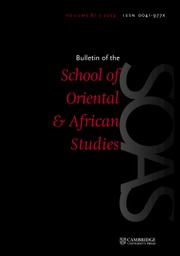The book under review is dedicated to a festival performed in Spring by the Hittite Prince (DUMU.LUGAL). Its composition probably dates back to the Middle Hittite period when the older manuscripts in our possession were composed. This festival tradition lasted until the Empire period. During this phase the festival was apparently reworked as a local AN.TAḪ.ŠUM-festival.
Piotr Taracha provides us with a thoughtful and comprehensive reconstruction and edition of the manuscripts and their sequence, both for the Middle and the Late Hittite periods. The book is organized in four chapters. Chapter 1 (The Sources) analyses the manuscripts and explains the order of the texts, to discern the relationship between manuscripts on single-, and on two-, and eventually three-column tablets (perhaps only the tiny fragment KBo 58.120). What I find particularly interesting is that the author investigates the relationship between fragments in Late New Script of version CTH 647.II, which was originally an MH festival, and the AN.TAḪ.ŠUM version CTH 647.I. He demonstrates how this edition was prepared for a single-column tablet and only in some parts the scribe had had CTH 647.II as a model. It would be very interesting, starting from his proposal, to analyse the connections among late Hittite festival texts by basing one's observation not only on the content but the shape of the tablets. Clearly, some Late Hittite festivals were written on single-column tablets and this shape was not an imitation of older models but a way to prepare some specific festival texts in order to distinguish them from others (see also G. Torri, “Remarks about the transmission of festival texts concerning the cult of Lelwani [based on the Fragment KBo 13.216 + KBo 56.89(+) KBo 56.90]”, in E. Rieken, A. Müller-Karpe and W. Sommerfeld, Saeculum. Gedenkschrift Heinrich Otten anlässlich seines 100. Geburtstags, Wiesbaden, 2015, 289–300).
The second chapter is dedicated to the texts’ transliterations and translations. The author, an experienced philologist, has prepared a very precise edition, proposing a number of restorations according to different parallel versions, presented in the edition under the main manuscript. In this regard his remark about the fact that the different manuscripts used here are not duplicates is very important because it may be valid for many other festival texts: the scribe would assemble shorter or longer parts of earlier manuscripts by making changes not only in the content but mostly in the text format (p. 91).
These remarks are well explained in chapter 3 (Characteristics of the local cult). This deals with a synopsis of the festival, and an analysis of the place of the celebration, the deities, and the participants. The core of this chapter attempts to identify where the festival was held, which the author suggests might have been the city of Durmitta. One of the most important clues is that the main deity of the pantheon celebrated in this festival is Telepinu, who had his cult centres in Durmitta, Ḫanḫana and Tawiniya. Furthermore one of the fragments attributed by Taracha to the festival, IBoT 1.10+ mentions a delivery of goods made by a man of Durmitta (II 4–6). If these three cities were close to each other, or at least located in the same district, each of them would be a possible candidate for the celebration of the festival. In this festival the god Telepinu is associated with the female deity Kataḫḫa. She is part of a category of female deities of central-north Anatolia, who stood at the head of several local panthea as in the cities of Ankuwa, Durmitta, Ḫanḫana and Katapa, and would surely deserve in future a separate study. Several other pages are dedicated to other deities celebrated in the festival and the spread of their cults in Anatolia. It is clear from the author's discussion that the state religion comprised the local cults, without ever completely cancelling the specific characters of each deity in the cities where he or she was initially worshipped.
Chapter 4 reconstructs the religion of north-central Anatolia, focusing on the main deities of the area and its natural elements, such as the mountains, which were a part of the local cults. In particular, Taracha tries to explain the relationships among the gods and the flourishing power in Anatolia of the Storm-God(s), suggesting a sequence of generations of gods, so that Telepinu, for example, would belong to an older generation than that of the Storm-Gods. I would be more cautious than the author in summing up our fragmentary and incomplete knowledge of the Hittite religion. What we really know of the local beliefs is in most cases filtered by the system of Hittite religious administration and its control (also inconstant) over the area, connected to the efforts of various Hittite sovereigns to preserve or restore local cults, as in the case of Ḫattušili III in central-north Anatolia. It is in this fourth chapter, however, that the author shows his complex understanding of the religious phenomena of the kingdom of Hatti, even when one may disagree with some of his conclusions.
Taracha, in preparing this masterful edition, has made an important contribution to our knowledge of the celebrations that took place in Anatolia during the Hittite era. With the reconstruction of Hittite festivals currently undergoing a phase of great scientific vitality, I am sure that this book will stimulate many future reflections on the theme.


